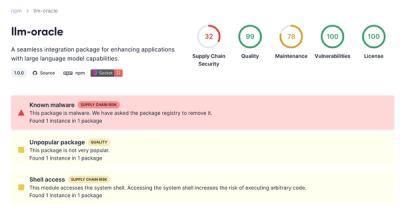FHC - FeedHenry Command Line Interface 
FeedHenry CLI, the command line interface to FeedHenry.
Installation
fhc should now be available your command line.
fhc -v will tell you what version of fhc you have installed.
Finally, install FHC bash completion: fhc completion >> ~/.bashrc (or ~/.zshrc)
Usage
From the Command Line
To see the list of commands available, just run fhc.
See fhc help for general help, or fhc help <someCommand> for help on a specific command.
To get started with fhc, set the FeedHenry target and then login:
$ fhc target https://apps.feedhenry.com
$ fhc login <your-email-address> <your-password>
To list your projects, use:
$ fhc projects
To create an app from a git repository use:
fhc app create --project=SomeProjectId --title=WelcomeApp --type=cloud_nodejs git://github.com/feedhenry-templates/welcome-app.git
As a Node.js Module
You can also use fh-fhc as a Node.js module in your scripts. This is useful for scripting automated tests, mobile app client builds and cloud deploys.
First, install & add it to your project dependencies by doing npm install --save fh-fhc from your project root.
Then, you can require it in your code like so:
var fhc = require('./lib/fhc');
fhc.load(function(err){
if (err){
// Something went wrong
}
// FHC started up OK - we can now perform commands, like listing projects:
fhc.projects({_ : []}, function(err, projects){
if (err){
// Handle error
}
console.log(projects);
});
});
Some commands require params to be passed in - these are typically passed like so:
fhc.app.create({ title : 'Some title', project : 'someProjectId'}, function(){
});
Older fhc commands still pass arguments in an ordered array, as below. The environment is still specified outside the array.
fhc.app.logs({_ : ['projectId', 'appId'], env : 'dev' }, function(){
});
Extending
Version 1.0 of fh-fhc updates the structure of commands:
lib
cmd # all commands go here
common # stuff which applies to both versions of feedhenry
fh2 # feedhenry 2-specific commands go here (e.g. `account`)
fh3 # feedhenry 3 specific commands go here (e.g. `project`)
internal # internal piping goes here
The common, fh2 and fh3 directory structure doesn't get exposed to the user, but everything underneath does - meaning we can have a command lib/cmd/common/fooGroup/barCommand.js, another lib/cmd/common/fh3/fooGroup/anotherCommand.js, and be able to run both fhc fooGroup barCommand and fhc fooGroup anotherCommand.
Internal commands in the internal directory are hidden from help output, but are still call-able.
Writing new commands is a little different than before. Old commands export a function - new style commands export an object.
Commands are DRY'd up substantially - see App List lib/cmd/fh3/app/list.js as an example of what a command definition looks like. Using the 'demand' syntax, yargs look after all all validation - you don't need to worry about it.
Commands can be DRY'd up even more if they're very similar - e.g. app start. This extends from a base class - anything with an _ prefix doesn't go into the command tree.
There's no longer need to require() new commands in many different places - no need to require() new commands at all, just put them in the relevant tree structure within in lib/cmd.
Tests are turbo'd, nock for mocks, coverage is at least a little better than before.
Setting a Proxy Server
fhc fhcfg set proxy http://host:port
# eg:
fhc fhcfg set proxy http://127.0.0.1:8080
Tests
grunt test
Internationalization
all of the strings expecting to be internationalized has to be passed through i18n._() function like:
module.exports = {
'desc': i18n._('Version info about the FeedHenry instance we\'re connected to'),
...
}
To get strings translated, we use the Zanata, the web-based translation platform. the source strings file has to be uploaded into the Zanata server. that can be done with:
grunt potupload
Prior to do that, please make sure you have an account on the Zanata server. if not, please visit https://translate.zanata.org and follow up the steps at http://docs.zanata.org/en/release/user-guide/account/account-sign-up/ to create an account, and http://zanata-client.readthedocs.io/en/latest/configuration/ to store the API key into $HOME/.config/zanata.ini.




